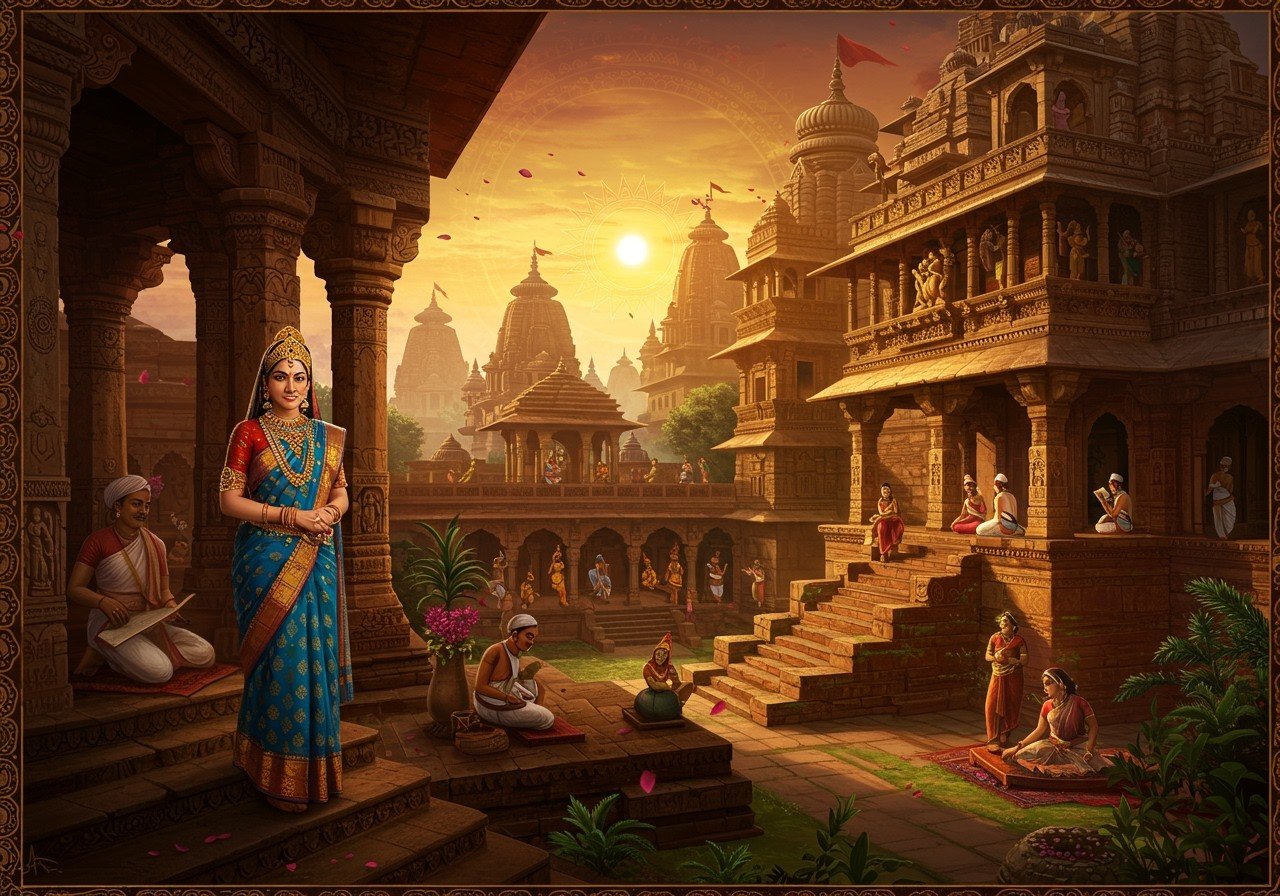
The Bhauma-Kara Dynasty, also known as the Kara dynasty, holds a significant place in the annals of Indian history, particularly in the cultural landscape of Odisha. Ruling from the 8th to the 10th centuries, this dynasty shaped the region’s political, architectural, and cultural trajectory. This article delves into the origins, achievements, and enduring legacy of the Bhauma-Kara Dynasty.
The Rise of the Bhauma-Karas
Tribhuvanamahadevi I: A Pivotal Figure
Tribhuvanamahadevi I played a crucial role in the dynasty’s history, skillfully navigating its rise from adversity. Her leadership and influence were instrumental in establishing a stable government and fostering economic growth through expanded trade and commerce.
Early Rulers and Mythology
The dynasty’s early rulers, such as Narakasura and his descendants, find mention in ancient Indian epics like the Mahabharata and Ramayana, adding a layer of mythological intrigue to their historical significance.
Religious and Cultural Flourishing
Initially followers of Buddhism, the Bhauma-Karas later embraced Shaivism. This religious transition is reflected in the architectural styles and iconography of the period. The dynasty’s patronage of both faiths fostered a unique blend of religious harmony, evident in the temples and monasteries they commissioned.
Architectural Marvels and Artistic Patronage
The Bhauma-Kara era witnessed a flourishing of art and architecture. Temples built during their reign stand as testaments to their sophisticated craftsmanship and aesthetic sensibilities. The dynasty’s patronage extended to literature and various art forms, contributing to a vibrant cultural scene.
Explore similar architectural wonders from the Chalukya Dynasty.
Discover the intricate details and historical significance of the Badami Cave Temples.
Exploring Bhauma-Kara Heritage Today
Today, numerous historical sites offer a glimpse into the Bhauma-Kara Dynasty’s legacy. Visiting these sites provides a tangible connection to Odisha’s rich past. Travelers can immerse themselves in the dynasty’s history and culture by exploring these architectural marvels and engaging with local traditions.
Plan your visit to the Bhoganandishwara Temple, another historical gem.
Discover the history, architecture, and significance of this magnificent temple.
Poojn.in: Connecting You to Odisha’s Cultural Heritage
Poojn.in, India’s leading provider of cultural and religious goods, offers a wide selection of products to enhance your exploration of Odisha’s heritage. Discover authentic puja items, handcrafted statues, and informative resources to deepen your understanding of the Bhauma-Kara Dynasty and its cultural contributions.
Bring home a piece of history with a Brass Maa Tara Murti from Poojn.in.
Honor the rich tradition of deity worship with this beautifully crafted murti.
FAQs: Delving Deeper into the Bhauma-Kara Dynasty
Who founded the Bhauma-Kara Dynasty? The Bhauma-Kara Dynasty was founded by Ksemankara.
When did the Bhauma-Kara Dynasty rule? The dynasty ruled from the 8th to 10th centuries CE.
Where did the Bhauma-Kara Dynasty hold power? Their reign extended across parts of present-day Odisha, India.
What were some key achievements of the dynasty? The Bhauma-Karas are renowned for their contributions to temple architecture, art, and cultural patronage.
Why is the Bhauma-Kara Dynasty important in Indian history? The dynasty played a vital role in shaping Odisha’s cultural and political development during the early medieval period.
Are there any famous temples from the Bhauma-Kara period? Yes, prominent temples like the Mukteswara Temple in Bhubaneswar stand as testaments to their architectural prowess.


